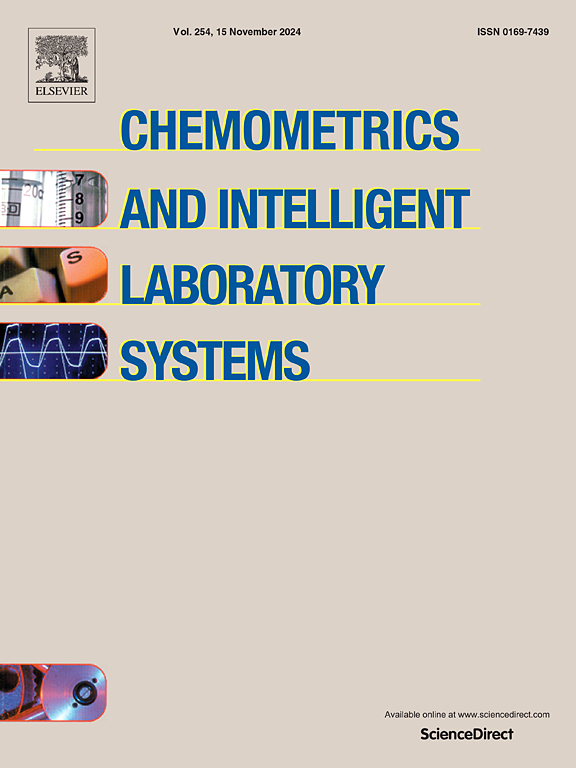Advanced breast cancer prediction using Deep Neural Networks integrated with ensemble models
IF 3.7
2区 化学
Q2 AUTOMATION & CONTROL SYSTEMS
Chemometrics and Intelligent Laboratory Systems
Pub Date : 2025-04-07
DOI:10.1016/j.chemolab.2025.105399
引用次数: 0
Abstract
Breast cancer (BC) is a fatal illness that affects millions of people every year. After lung cancer, BC illness is one of the world's major causes of death for women. A breast cell-derived malignant tumor is referred to as BC. Both developed and developing countries are struggling with this widespread cancer. Machine learning (ML) and Deep Learning (DL) have appeared as effective technologies in BC predictions with the highest accuracy in the past years due to their robust taxonomy and diagnostic capabilities. This paper introduces a novel Deep Neural Networks-based Stacking Ensemble Model (DNN-SEM) enhanced with a hybrid stacking ensemble model (SEM) and Extra Tree Classifier (ETC) technique to extract the most essential features from the suggested BC datasets. The proposed DNN-SEM integrates Deep Belief Network (DBN) and Artificial Neural Network (ANN) as level-1 models, referred to as SEM-DBN and SEM-ANN, respectively. The level-1 models are designed using four traditional ML algorithms, including XGBoost Classifier (XGBC), Logistic Regression (LR), Random Forest (RF), and Support Vector Machine (SVM), which are designed as level-0 models. The proposed DNN-SEM model is trained using four BC datasets, namely Diagnostic Wisconsin Breast Cancer Dataset (WBCD) (Dataset-I), Coimbra Breast Cancer Dataset (CBCD) (Dataset-II), Original Wisconsin Breast Cancer Dataset (WDBC) (Dataset-III), and Prognostic Wisconsin Breast Cancer (WBCP) (Dataset-IV). The efficacy of the proposed DNN-SEM is assessed through established evaluation metrics, including accuracy, sensitivity, specificity, Matthew's correlation coefficient (MCC), F-score, confusion matrix, and ROC curves. To analyze the efficiency of the DNN-SEM, its performance is compared with the proposed single classifiers, ensemble, and state-of-the-art models present in the literature. The results demonstrate that DBN-SEM achieves the highest accuracy of 99.62 %, with the lowest error rate. The proposed DBN-SEM and ANN-SEM achieved promising accuracy scores against level-0 and state-of-the-art methods.
利用集成集成模型的深度神经网络进行乳腺癌预测
乳腺癌(BC)是一种致命的疾病,每年影响数百万人。继肺癌之后,BC是世界上女性死亡的主要原因之一。乳腺细胞源性恶性肿瘤简称BC。发达国家和发展中国家都在与这种广泛存在的癌症作斗争。机器学习(ML)和深度学习(DL)由于其强大的分类和诊断能力,在过去几年中已成为BC预测中准确率最高的有效技术。本文介绍了一种新的基于深度神经网络的堆叠集成模型(DNN-SEM),该模型采用混合堆叠集成模型(SEM)和额外树分类器(ETC)技术进行增强,从建议的BC数据集中提取最基本的特征。提出的DNN-SEM将深度信念网络(DBN)和人工神经网络(ANN)作为一级模型,分别称为SEM-DBN和SEM-ANN。一级模型采用XGBoost Classifier (XGBC)、Logistic Regression (LR)、Random Forest (RF)和Support Vector Machine (SVM)四种传统ML算法设计,并将其设计为0级模型。提出的DNN-SEM模型使用四个BC数据集进行训练,即诊断威斯康星州乳腺癌数据集(WBCD)(数据集- 1),科英布拉乳腺癌数据集(CBCD)(数据集- ii),原始威斯康星州乳腺癌数据集(WDBC)(数据集- iii)和预后威斯康星州乳腺癌(WBCP)(数据集- iv)。通过建立的评价指标,包括准确性、敏感性、特异性、马修相关系数(MCC)、f评分、混淆矩阵和ROC曲线,对所提出的DNN-SEM的疗效进行评估。为了分析DNN-SEM的效率,将其性能与文献中提出的单一分类器、集成和最先进的模型进行比较。结果表明,DBN-SEM的准确率最高,达到99.62%,错误率最低。提出的DBN-SEM和ANN-SEM在0级和最先进的方法下取得了很好的精度分数。
本文章由计算机程序翻译,如有差异,请以英文原文为准。
求助全文
约1分钟内获得全文
求助全文
来源期刊
CiteScore
7.50
自引率
7.70%
发文量
169
审稿时长
3.4 months
期刊介绍:
Chemometrics and Intelligent Laboratory Systems publishes original research papers, short communications, reviews, tutorials and Original Software Publications reporting on development of novel statistical, mathematical, or computer techniques in Chemistry and related disciplines.
Chemometrics is the chemical discipline that uses mathematical and statistical methods to design or select optimal procedures and experiments, and to provide maximum chemical information by analysing chemical data.
The journal deals with the following topics:
1) Development of new statistical, mathematical and chemometrical methods for Chemistry and related fields (Environmental Chemistry, Biochemistry, Toxicology, System Biology, -Omics, etc.)
2) Novel applications of chemometrics to all branches of Chemistry and related fields (typical domains of interest are: process data analysis, experimental design, data mining, signal processing, supervised modelling, decision making, robust statistics, mixture analysis, multivariate calibration etc.) Routine applications of established chemometrical techniques will not be considered.
3) Development of new software that provides novel tools or truly advances the use of chemometrical methods.
4) Well characterized data sets to test performance for the new methods and software.
The journal complies with International Committee of Medical Journal Editors'' Uniform requirements for manuscripts.

 求助内容:
求助内容: 应助结果提醒方式:
应助结果提醒方式:


